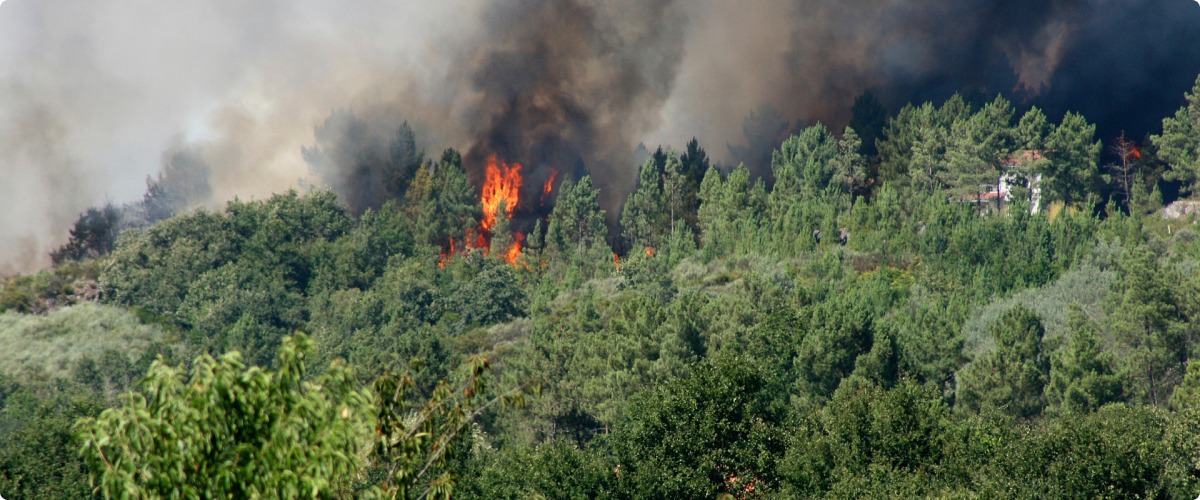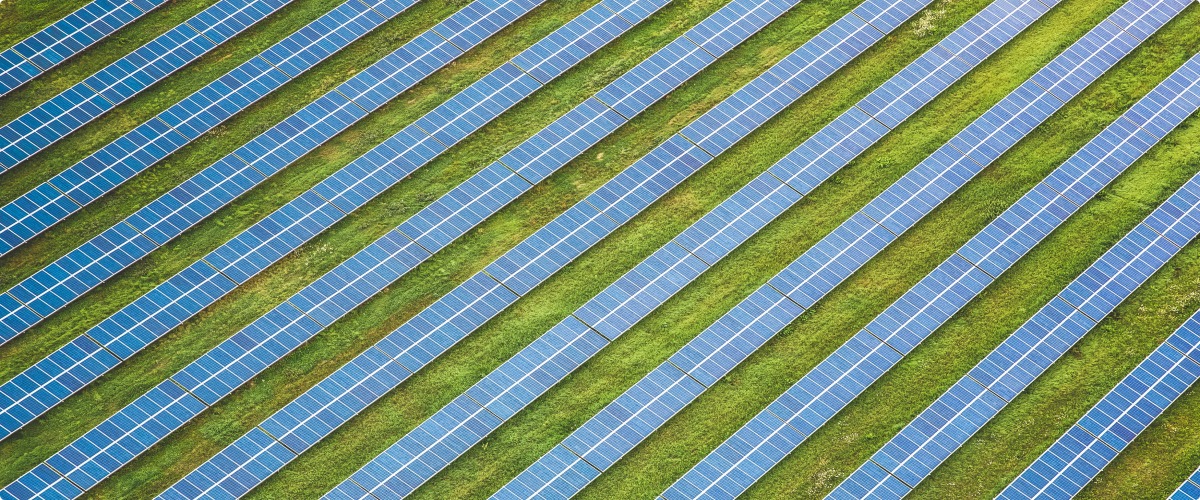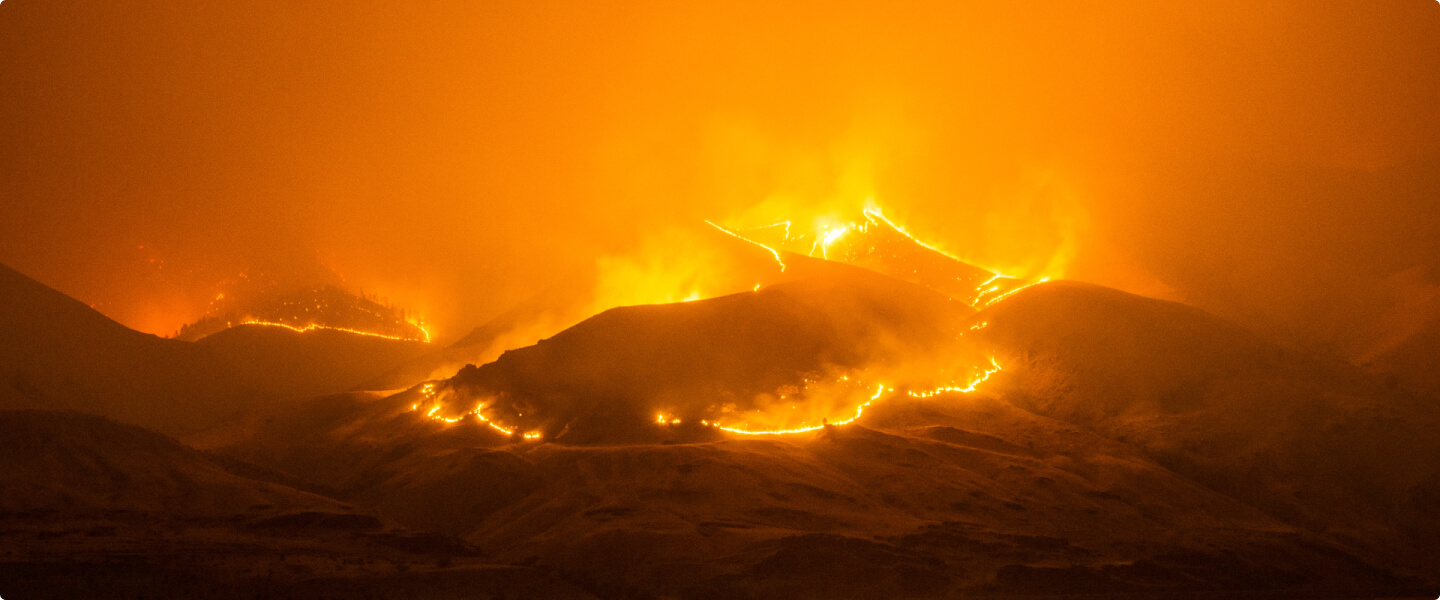Images of burning wildland areas across the world are now familiar sights in the media especially during the summer and fall. In the United States alone, there is an average of over 70,000 wildfires each year, but worse yet, studies have shown that the annual acreage burned is over 60% larger than decades ago. Wildfires are becoming more devastating over time, and federal, state, and local agencies are struggling to keep up.
Due to the land management complexities across government agencies, understanding who will fund this specific kind of disaster response is an enormous challenge for legislators and emergency agencies. Often state reimbursement from federal funds for wildfire recovery.
A 2021 study by the Brookings Institution estimated that $7 from the federal government went to disaster recovery for every dollar in fire preparedness spending. Any way you look at it, early wildfire detection and responsiveness is the most prudent way to being minimizing the i fiscal, environmental, and human expense toll.
The National Institute of Building Sciences estimates that every dollar invested in wildfire mitigation saved $3 in post-disaster recovery costs. Investment in immediate response protocols and tools that leverage the latest technologies are foundational for early detection and of fires. We sit at a unique inflection point where computers are smaller and more powerful than ever. Cameras can see greater distances with higher resolution in less light. AI computer vision is far more advanced and quickly becoming mainstream thanks to tools like Chat-GPT. Use of this technology working alongside the men and women in fire protection is gaining wider adoption.
The case for computer vision as an essential investment in wildland fire detection
The subset of AI called computer vision is easily identifying objects, people, and activities in images derived from live video streams. Such intelligence can “see” images and understand their context by leveraging computing frameworks like deep neural networks and transformers. In the past, such technology has been less mobile. The electrical, processing, and networking power was insufficient to derive real value from computer vision algorithms in ultra dynamic, real-world settings.
Today, these algorithms can be deployed from cameras on cell towers, unmanned aerial vehicles, or drones to provide always-on monitoring of wide expanses of remote geography. Computer vision AI platforms, like Chooch AI Vision, are optimized for remote deployments out-of-the-box and maintain highly accurate fire detection algorithms that can distinguish smoke from clouds, fog, and other atmospheric conditions.
Today, computer vision for wildfire detection is no longer an interesting experiment. It’s a robust and reliable technology capable of running on existing cameras and hardware and accurately detecting wildfires across thousands of cameras. It’s being used right now on over 2,000 cameras in California. In less than a second, smoke is accurately identified across a vast plain of imagery with false positives numbering in the single digits out of thousands of images every minute.
Now is the time to make computer vision a foundational capability in any wildfire mitigation strategy.
Key components of a computer vision system for wildfire detection
A computer vision system for wildfire detection typically consists of three main components: image acquisition and processing, feature extraction and pattern recognition, and machine learning algorithms. Let’s take a closer look at each of these components.
Image acquisition and processing
Image acquisition and processing involves capturing images of the environment using cameras and then processing those images to extract relevant information. Cameras can be placed on towers, drones, or other platforms to capture images at regular intervals. Once the images are captured, they can be processed using image processing technology to enhance their quality and extract features that are relevant for wildfire detection.
Feature extraction and pattern recognition
Feature extraction and patter recognition involves using algorithms to extract specific features from images, such as color, texture, and shape. These features are then used to identify patterns that indicate a wildfire. For example, algorithms may be trained to recognize the shape of a smoke plume or the color of flames, which would indicate the presence of a fire.
Machine learning algorithms for wildfire detection
The third component of a computer vision system for wildfire detection involves machine learning algorithms. These algorithms use patterns identified in the image data to predict whether a wildfire is present or not. Machine learning algorithms can be trained on a large dataset of images that include both wildfire and non-wildfire images, enabling them to recognize patterns that are indicative of a wildfire and make more accurate predictions
Real-world applications of computer vision in wildfire detection
Computer vision has several real-world applications that can help detect wildfires. These include satellite imagery and remote sensing, drone-based monitoring systems, and ground-based camera networks.
Satellite imagery and remote sensing
Satellite imagery and remote sensing technologies can provide high-resolution imagery of vast areas, enabling authorities to monitor wildfires across a wider geography. Some satellite imagery providers can even detect wildfires in near real-time, allowing authorities to respond quickly before the situation escalates.
Drone-based monitoring systems
Drone-based monitoring systems allow for rapid deployment of cameras to areas where fires are likely to occur, reducing response times and improving situational awareness. Drones can also be equipped with thermal cameras that detect heat signatures, allowing them to identify fires that may not be visually visible from the air.
Ground-based camera networks
Ground-based camera networks can also be used for wildfire detection. These systems typically consist of a network of cameras placed at tactical locations. These cameras can capture high-resolution images at regular intervals and then transmit those images to a central processing system for analysis.
Overcoming challenges of using computer vision for wildfire detection
Using computer vision for wildfire detection is not a new idea, but there were several core challenges that previously plagued its application at scale. Fortunately, forward momentum in hardware and algorithmic design have made computer vision both a trustworthy and robust solution ready for the field.
Image quality and resolution
In the past, image quality and resolution of images used for wildfire detection have sometimes impacted the accuracy of AI systems. Because cameras are exposed to the elements, cracked lenses and variable lighting made it difficult to distinguish fire and smoke from clouds, haze, or fog. A key revolution that has solved for these variables is the popularization of “transformer” models or self-attention models. Such AI algorithms specialize in maintaining positional context in an image, so the placement of fire and smoke can today be reliably deciphered amongst other occlusions or objects.
False positives and negatives
False positives and negatives have been challenges in using computer vision for wildfire detection. False positives occur when the system detects a fire when no fire exists, while false negatives occur when the system fails to detect a real fire. Modern fire detection algorithms err on the side of caution and likely trigger more false positives than negatives. Because AI is only as good as its training data, it’s imperative to train AI with similar vantage points as the real-world applications. The latest AI models, such as ImageChat™ by Chooch, use billions of parameters to fine-tune varieties of training data, ensuring that the models account for the maximum number of edge scenarios.
Scalability and real-time processing
Finally, scalability and real-time processing can be challenging for computer vision systems used for wildfire detection. The sheer volume of data generated by cameras can be overwhelming, requiring significant processing power and storage capacity. In addition, the system must be able to process the data quickly and in real-time, alerting authorities to the presence of a fire as quickly as possible, but today’s computers are more powerful than ever in history. Graphics processing units, or GPUs, are equipped with over 50 billion transistors. Simply, hardware is more mobile and can handle more logic than previously imagined. Also, new data management paradigms adopted by telecom providers with the roll-out of 5G communications has optimized the way only critical data is sent over a network making close-proximity processing a reality for standard hardware tools.
Use case studies and success stories for AI in wildfire detection
There are several examples of successful AI-powered wildfire detection systems which have been deployed today. For example, the Fire Integrated Real-Time Intelligence System (FIRIS) uses real-time data from sensors and artificial intelligence algorithms to detect wildfires in California. The Rapid Wildfire Detection Using Satellite Data (RAPID) system uses satellite imagery and AI algorithms to detect wildfires in real-time.
Other examples include the NASA Fire Information for Resource Management System (FIRMS) web-based tool and UC San Diego’s project for real-time fire detection, ALERTCalifornia.
Collaborative efforts and partnerships
Collaborative efforts between government agencies, research institutions, and private companies are essential for developing effective wildfire detection and prevention strategies. By sharing data and expertise, these groups work together to create comprehensive solutions that are tailored to specific regions and environments. By leveraging the power of AI, computer vision, and fire detection technologies, we can protect our communities and natural resources from the threat of wildfires.
Chooch has been active in this space since 2019 and has state-of-the-art, ReadyNow™ computer vision models trained to accurately identify smoke and fire in any wilderness image. Get in touch with us to learn more about Chooch wildfire detection solutions.





